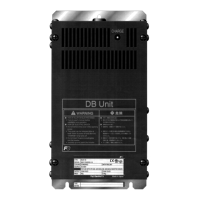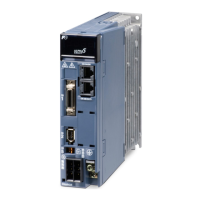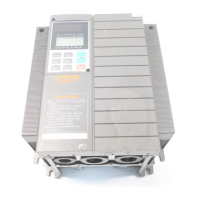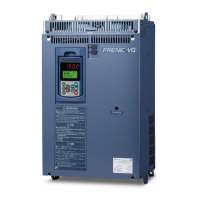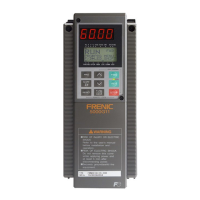6-13
Possible Causes What to Check and Suggested Measures
(4) The set activation level
(H27) of the PTC
thermistor for motor
overheat protection was
inadequate.
Check the thermistor specifications and recalculate the detection voltage.
Î Reconsider the data of function code H27.
(5) A PTC thermistor and
pull-up resistor were
connected incorrectly or
the resistance was
inadequate.
Check the connection and the resistance of the pull-up resistor.
Î Correct the connections and replace the resistor with one with an
appropriate resistance.
(6) The value set for the
torque boost (F09) was
too high.
Check the data of function code F09 and readjust the data so that the moto
does not stall even if you set the data to a lower value.
Î Readjust the data of the function code F09.
(7) The V/f pattern did not
match the motor.
Check if the base frequency (F04) and rated voltage at base frequency (F05)
match the values on the nameplate on the motor.
Î Match the function code data to the values on the nameplate of the motor.
(8) Wrong settings Although no PTC thermistor is used, the V2/PTC switch is turned to PTC,
which means that the thermistor input is active on the PTC (H26).
Î Set H26 (PTC thermistor Input) to "0" (inactive).
[ 11 ]
fus
Fuse blown (125HP or above)
Problem The fuse inside the inverter blew.
Possible Causes What to Check and Suggested Measures
(1) The fuse blew because of
a short-circuiting inside
the inverter.
Check whether there has been any excess surge or noise coming from
outside.
Î Take measures against surges and noise.
Î Have the inverter repaired.
[ 12 ]
pbf
Charger circuit fault
(50HP or above (208 V), 75HP or above (460 V))
Problem The magnetic contactor for short-circuiting the resistor for charging failed to work.
Possible Causes What to Check and Suggested Measures
Check whether, in normal connection of the main circuit (not connection via
the DC link bus), the connector (CN) on the power supply printed circuit
board is not inserted to NC .
Î Insert the connector to FAN .
(1) Control power was not
supplied to the magnetic
contactor intended for
short-circuiting the
charging resistor.
Check whether you have quickly turned the circuit breaker ON and OFF to
confirm safety after cabling/wiring.
Î Wait until the DC link bus voltage has dropped to a sufficiently low level
and then reset the current alarm, and turn ON the power again. (Do not
turn the circuit breaker ON and OFF quickly.)
(Turning ON the circuit breaker supplies power to the control circuit to the
operation level (lighting LEDs on the keypad) in a short period.
Immediately turning it OFF even retains the control circuit power for a
time, while it shuts down the power to the magnetic contactor intended fo
short-circuiting the charging resistor since the contactor is directly
powered from the main power.
Under such conditions, the control circuit can issue a turn-on command to
the magnetic contactor, but the contactor not powered can produce
nothing. This state is regarded as abnormal, causing an alarm.)

